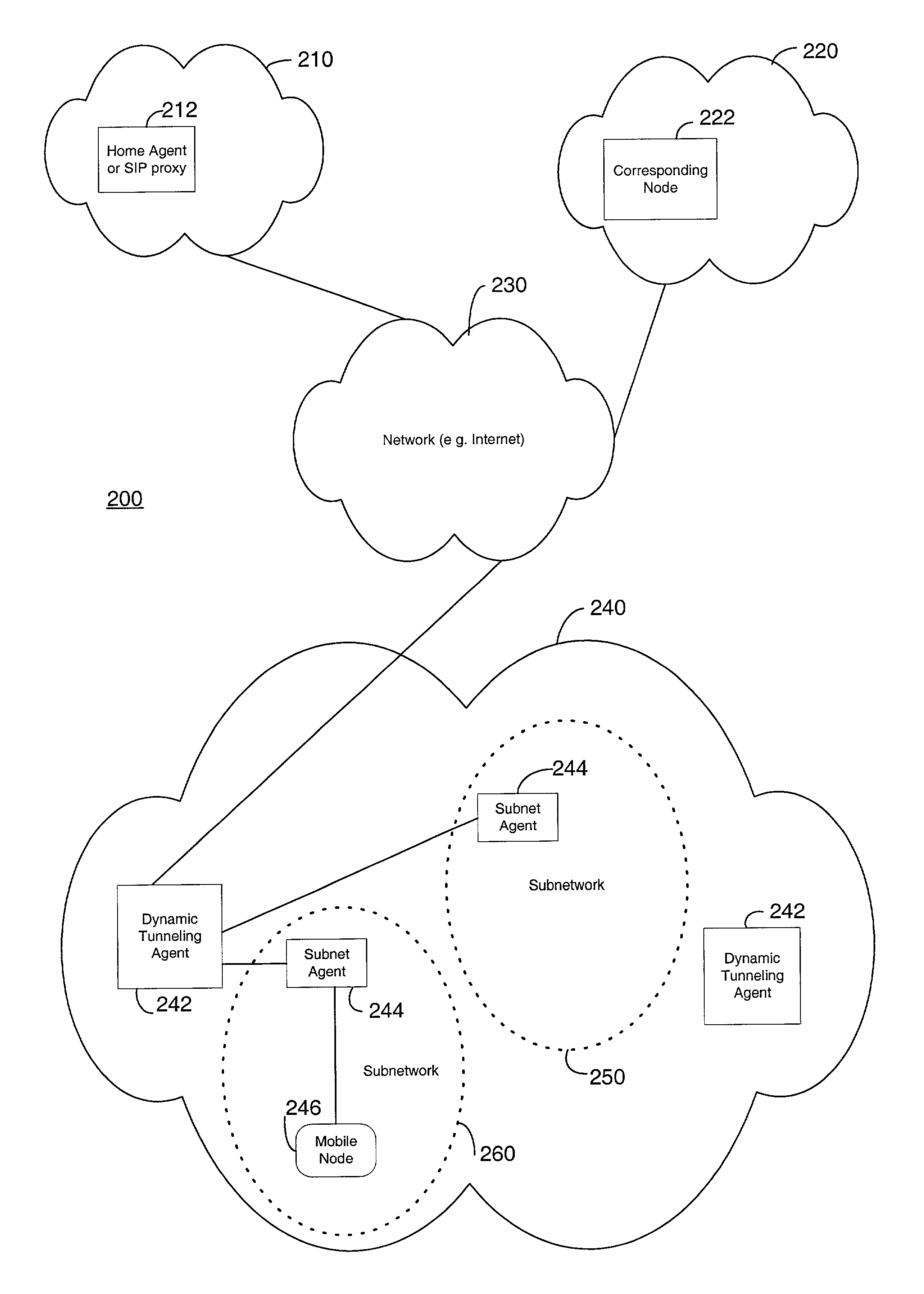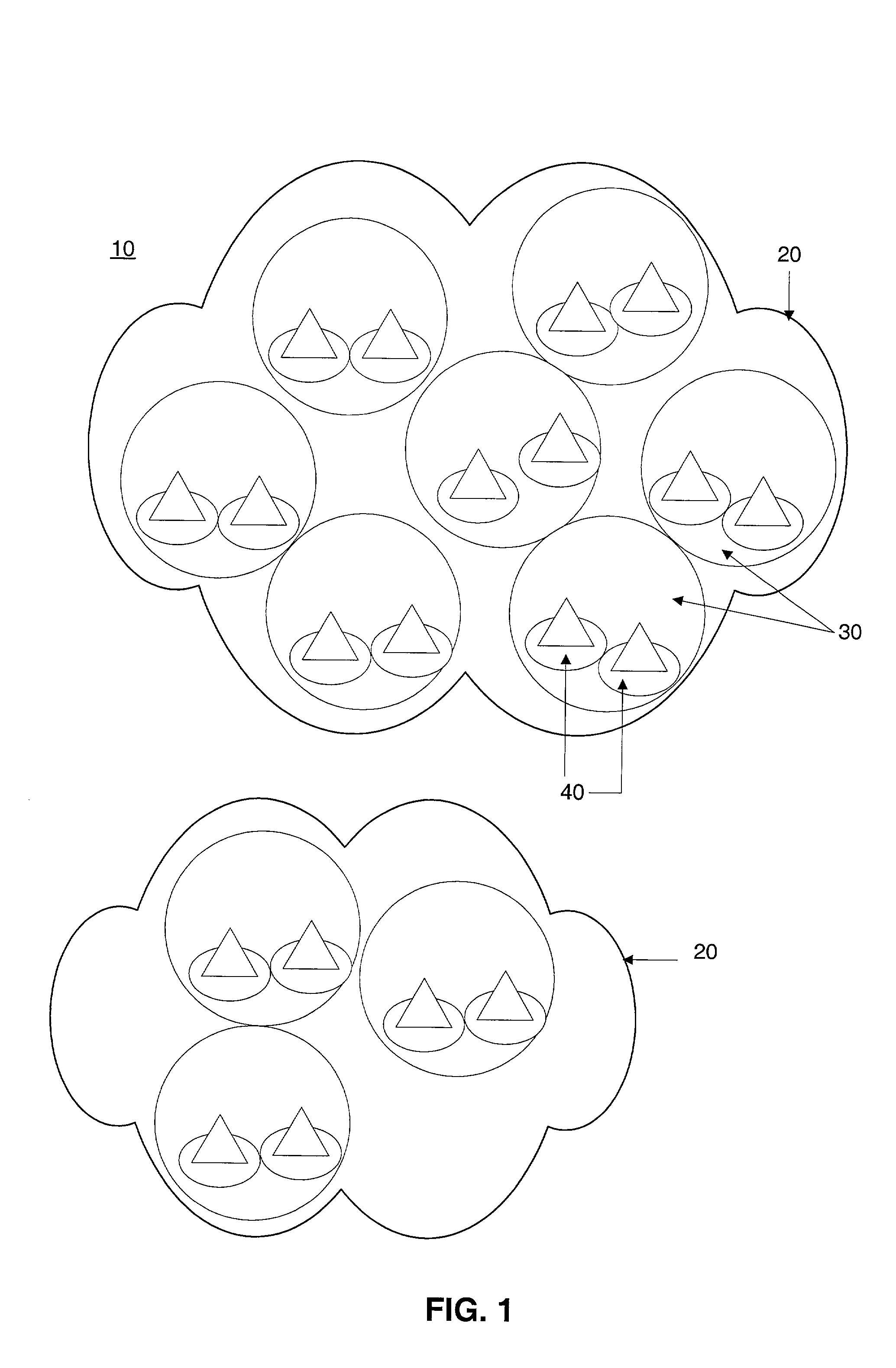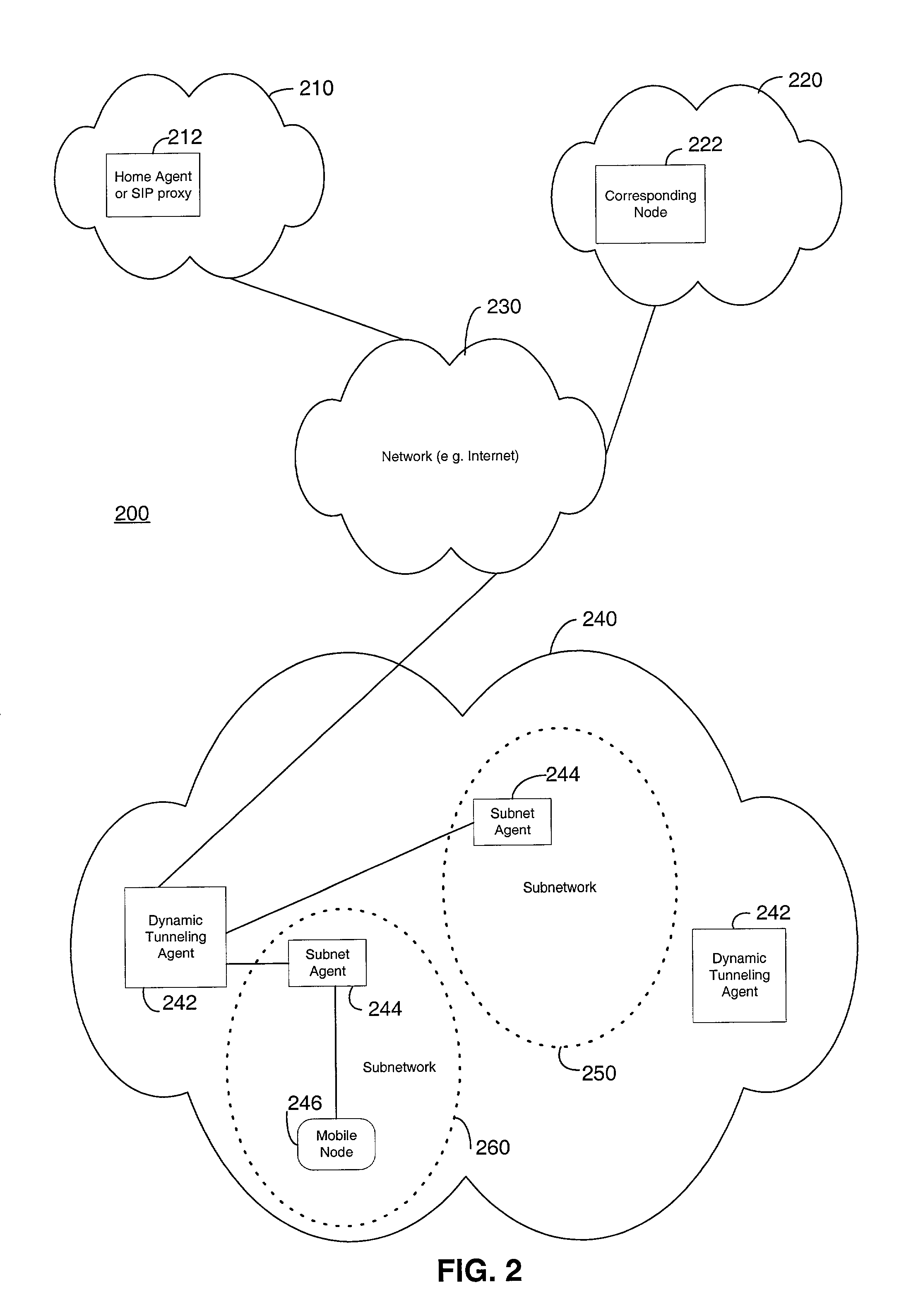Methods and systems for a generalized mobility solution using a dynamic tunneling agent
a dynamic tunneling agent and mobility solution technology, applied in the field of wireless networks, can solve the problems of not considering the integration of additional functions, unable to support tcp connections, and unable to realize commercially viable internet protocol (ip) mobility support over the current cellular infrastructur
- Summary
- Abstract
- Description
- Claims
- Application Information
AI Technical Summary
Benefits of technology
Problems solved by technology
Method used
Image
Examples
Embodiment Construction
[0049]Reference will now be made in detail to the preferred embodiments of the invention, examples of which are illustrated in the accompanying drawings. Wherever possible, the same reference numbers will be used throughout the drawings to refer to the same or like parts.
[0050]FIG. 1 illustrates an exemplary wireless system 10, in which an embodiment of the present invention may be implemented. As shown, system 10 includes a number of domains or networks 20 each including a plurality of subnetworks or subnets 30. Each subnet 30 includes a plurality of cells or base stations 40. As discussed above, a mobile node may transition across a number of boundaries between cells 40 and subnets 30. Further more, a mobile node may include a host or router that may change its location or point of attachment in the system. A host may include, for example, a wireless device or a portable personal computer.
[0051]The transition of a mobile node from a cell 40 to another cell 40 within the same subne...
PUM
 Login to View More
Login to View More Abstract
Description
Claims
Application Information
 Login to View More
Login to View More - R&D
- Intellectual Property
- Life Sciences
- Materials
- Tech Scout
- Unparalleled Data Quality
- Higher Quality Content
- 60% Fewer Hallucinations
Browse by: Latest US Patents, China's latest patents, Technical Efficacy Thesaurus, Application Domain, Technology Topic, Popular Technical Reports.
© 2025 PatSnap. All rights reserved.Legal|Privacy policy|Modern Slavery Act Transparency Statement|Sitemap|About US| Contact US: help@patsnap.com



